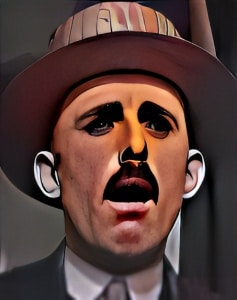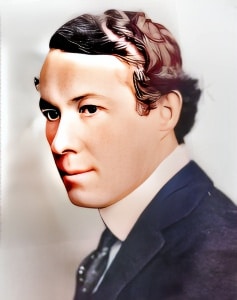 Forrest Stanley stands as a distinguished figure, his contributions leaving an indelible mark on the golden age of filmmaking.
Forrest Stanley stands as a distinguished figure, his contributions leaving an indelible mark on the golden age of filmmaking.
Born on August 21, 1889, Stanley’s journey in the world of entertainment traversed the transformative years of early cinema, where the absence of spoken words heightened the importance of visual storytelling.
Stanley’s career unfolded against the backdrop of the burgeoning film industry, where the flickering images on the silver screen held a mesmerizing allure for audiences hungry for narratives brought to life through the magic of cinema. His versatility as an actor and screenplay writer allowed him to navigate the evolving landscape of silent film, leaving an enduring legacy in the realm of visual storytelling.
One of Stanley’s notable roles that resonates across the decades is his portrayal of Charles Brandon in the historical film “When Knighthood Was in Flower” (1922). Directed by Robert G. Vignola, this film catapulted Stanley into the limelight, showcasing his ability to breathe life into characters from bygone eras. Set against a backdrop of historical intrigue and romance, the film transported audiences to a time when chivalry and knighthood were inextricably woven into the fabric of storytelling.
In addition to his foray into historical drama, Stanley left an indelible mark on the murder mystery genre with his role as Charles Wilder in “The Cat and the Canary” (1927), directed by Paul Leni. This film, known for its atmospheric tension and eerie settings, underscored Stanley’s adaptability as an actor, seamlessly transitioning between genres and captivating audiences with his on-screen presence.
The year 1922 saw Stanley take on the character of Cheyne Rovein in “ Beauty’s Worth,” further showcasing his range as an actor. Silent films of this era relied heavily on the expressive capabilities of actors, and Stanley’s performances spoke volumes without the need for spoken words. His ability to convey emotions, whether in historical epics or romantic dramas, solidified his standing as a prominent figure in the silent film landscape.
Beyond the characters he portrayed on screen, Stanley’s contribution as a screenplay writer added another layer to his multifaceted career. The collaborative nature of silent filmmaking often required actors to engage with the creative process beyond their on-screen performances. Stanley’s dual role as an actor and writer attested to his deep understanding of the medium and his commitment to shaping narratives that resonated with audiences of the time.
The silent era was a time of experimentation and innovation in filmmaking, with directors, actors, and writers pushing the boundaries of what was possible on the silver screen. Stanley’s career aligned with this spirit of exploration, and his collaborations with directors and fellow actors contributed to the evolving language of cinema.
As the silent era gave way to the advent of synchronized sound, many actors faced the challenge of adapting to a new cinematic landscape. Stanley’s career, like those of his contemporaries, navigated this transition, showcasing the resilience and adaptability of a generation of performers who had mastered the art of silent storytelling.
Forrest Stanley’s legacy endures as a testament to the enchantment of silent cinema. His performances, captured in the frames of celluloid, serve as a window into a bygone era, where the magic of storytelling unfolded without spoken words. As audiences revisit the silent films that feature Stanley’s name in the credits, they are transported back to a time when the language of cinema was in its infancy, and Forrest Stanley was one of its eloquent storytellers.




